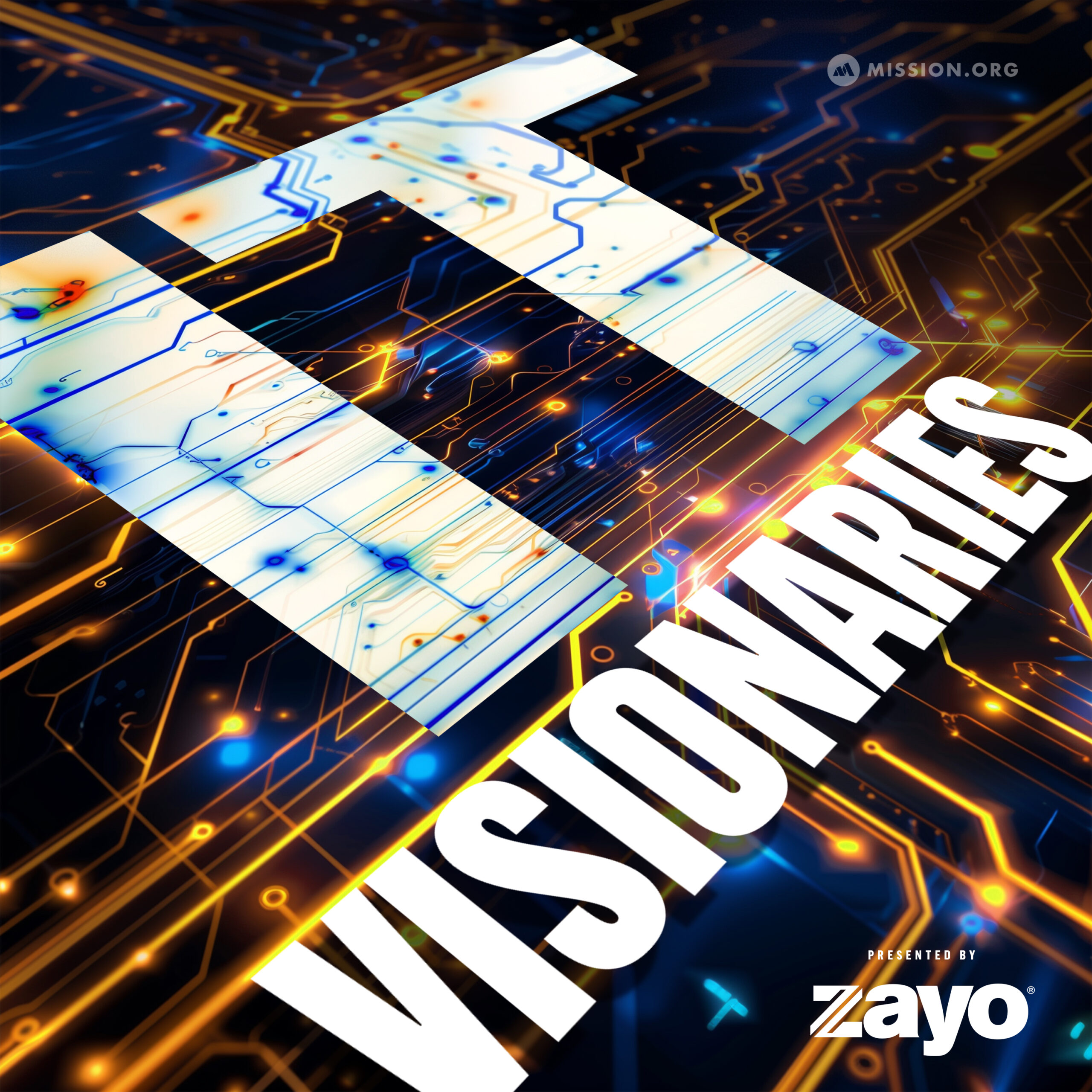Or listen in your favorite podcast app
Apple Podcasts / Google Podcasts / Stitcher
On this episode of IT Visionaries, we sit down with Ankit Kumar, CTO of Ubiquity6, whose mission is to unlock new ways for people to connect in physical spaces. Ankit and host Ian Faison take a deep dive into everything currently going on in the computer vision industry, specifically, augmented and virtual reality. Ankit discusses building AR technology and the complexity that goes into it, as well as businesses that can benefit from this type of technology.
Best advice for developers trying to get into AR and VR: “One crucial part is to realize that building in AR and VR is and will be for a while, very closely tied to building a game. I believe that many of these experiences will not be like traditional games.”
And
“Understand game engines, game rendering, and 3D rendering deeply. Working in 3D is a bit of a mental shift, so own that and study accordingly. With that, there aren’t many tried and true practices, so be willing to experiment and take the long way home.”
Key Takeaways:
- How Ankit got into AR and some use cases
- The future of deep learning
- How to stay up-to-date in a rapidly-changing field
Ankit’s History with AR
Ankit grew up fascinated with technology and gadgets. He was a mathematics major at Stanford University and spent most of his time pursuing applications of maths and statistics in computer science, primarily in deep learning and artificial intelligence. Ankit actually began learning about software just so that he could apply the technology to his math work. At school, he met his future co-founder. The two bonded over their love of Sci-Fi and the vision of the future the genre promised. Years later, they decided to try to move the world in the direction of that promised future with their own company, Ubiquity6. They wanted to use deep learning, AR, VR and different levels of computing power to impact people’s lives.
Ankit and his partners saw the possibility for businesses with physical spaces to use AR and VR to enhance the experience for their customers, so they went about building the technology that could make that happen.
“What got me into A.I. and computer vision was using software as a tool for math. I got into AR and VR, through my journey with technology and A.I computer vision. I then realized that the two interests converged. I got interested in what you can do with graphics and immersive experiences.”
“We would like to expose this technology to the world in a way in which consumers are able to get value out of it.”
Ankit’s Multi-User Experience at the MoMa and how Ubiquity6 works
Augmented reality allows you to view one space in time, from a different space, and build layers on top of layers in a physical world. Ankit created a multi-user experience at the San Francisco Museum of Modern Art, where users access the app and participate in a shared coordinate system, looking at the same AR content, floating at that moment. This was an excellent use case for Ubiquity6’s technology, which requires only a smartphone, which you use to map a space and then create within it. And whatever you create can be accessed again later and even shared with others using the technology. The virtual environment Ubiquity6 creates is so rich, it can feel like the user is actually in the physical space — like the MoMA — even if they are thousands of miles away.
“All you need is a smartphone. You essentially take a video of the space and send that to our backend. Our backend then turns the video(s) into a single reconcile corner system; a 3D representation of the space. There are several things that 3D representation has with it. The two primary ones would be visualization and the ability to localize someone in that corner space later when they’re there.”
“Once we have the MoMA digitized and into our platform, now many people can make layers of content on that canvas, so to speak, the MoMA being the canvas. And so even if you live in Brazil, you can make an experience at the MoMA. You don’t have to actually go be there, but we want users to be able to do that themselves.”
How PokemonGo is leveraging AR
Ankit believes that PokemonGo has been a great start in leveraging augmented reality. But Ankit and his team want to make an even richer VR world that can be experienced together. For a richer experience to present, there needs to be localization technology. Essentially, Ankit wants everyone who logs on to see the same things at the same time and if someone virtually moves something, that action is consistent across the experience of everyone using the technology.
“We want users to be able to make their own world, whatever they want it to be and share it with other people. And so we’re not coming at it from a sort of studio perspective, building some AAA game that is engaging to a certain subset of people that like Pokemon. We want to empower users to build the world themselves.”
“It’s kind of like we’re in two different copies of the same experience, but we’re not actually together.”
Where is deep learning headed as an industry?
Over the last five years, and moving forward, there has been an “inexorable march” of deep learning taking over A.I. academic fields. Looking back at the history of deep learning until now, you can see how much of an impact it has made, and it is slowly solving more and more problems. Ankit believes that deep learning will be used in two key areas: better tooling, systems and processes to work with the data in the industry, and algorithmic invention where we are applying deep learning to more problem statements to different kinds of problems
“Industry adoption of deep learning seems to be more of a software engineering problem, and not as much of a research problem. In many cases, it is how to train these massive networks and data sets. It would be best if you did it continuously, then deploy it safely and reliably. Because the scale of data that we’re working with now is incredible.”
Staying Up To Date in the Field
There is so much innovation happening in the field, it’s often hard to keep up. Ankit does his best to stay up to date by reading articles on Twitter and blogs, and he encourages the members of his team to do the same.
“It is so important to stay up to date with the field because there’s a lot of progress and you can miss something very quickly. Within two-plus years that we’ve been doing this company, the field has changed relatively dramatically, and when you’re working in a field with such a high rate of progress, you’re very liable to get left behind.”




